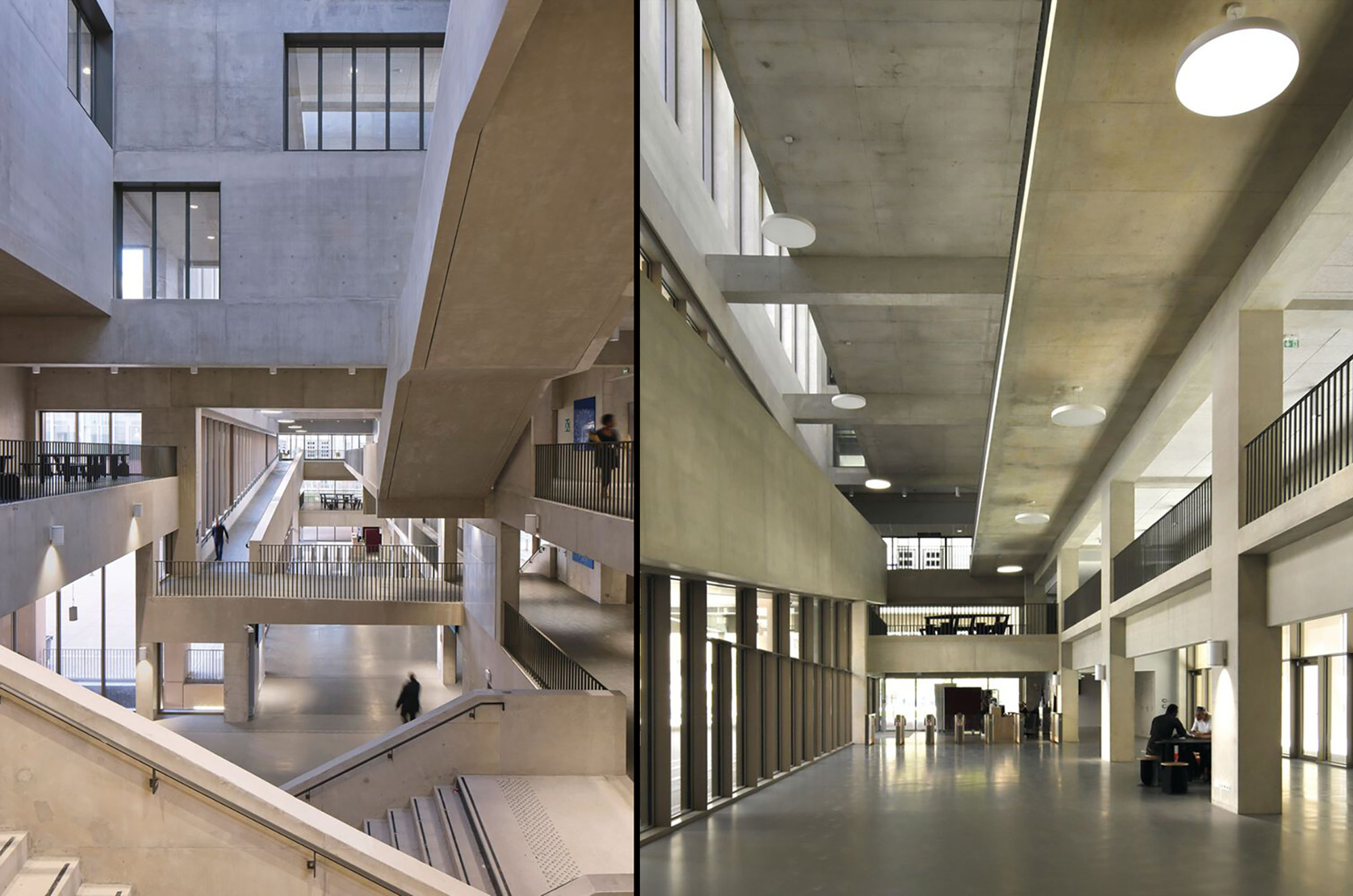




















Project: Institut Mines-Télécom
Location: Palaiseau, Paris, France
Architects: Grafton Architects
Local Architect: Vigneu Zilio Architectes
Client: Institut Mines-Télécom
Area: 46,200m2
Date: 2013 (Competition)
Status: Completion 2019
Photographs: Philippe Ruault, Dennis Gilbert
Landscape Architects: Atelier Moabi
Quantity Surveyor: Alayrac
Acoustic Engineer: Groupe Gamba
Project Managment: Artelia
Environmental Certification : Green Affair
Kitchen Consultant : EFC
Signage: Locomotion
Structural Engineer: OTEIS
Civil/ Thermal/ M&E/ HVAC/ Fire: OTEIS
Environmental Engineer: Chapman BDSP
Construction Management: Egis
The building is organised around six spaces: the garden, four external courtyards and the ‘Rue intérieure’ which connects the other spaces and the entrance to form a 'social heart' for the institute. Between the compressed western half of the building and the open garden spans a library ‘bridge’ which connects the community of scholars, professors, and staff with a series of interlocking halls, reading rooms and loggias spaces. The outer form of the block is held by the 800 offices with a fine-grained structure, sitting above the larger laboratories and amphitheatres below which have greater spans. At ground level the structure is as open as possible so the public spaces and garden can flow together to form a continuous civic landscape.
This building sits within a master plan for a plateau near Paris which proposes streets, squares and boulevards, poetically integrating landscape, learning and industry. We explored the legacy of lawns, quadrangles and cloisters in the great tradition of educa-tional institutions. In the making of a 21st Century university building we were inspired by a close study of historical precedent such as the Palais Royale, Paris and Trinity College, Dublin and the Ospedale Maggiore, Milan and the ancient Greek Stoa of Attalos.
We thought about this new building as a cauldron of ideas where shared elements are placed firmly on the ground and more private space is raised up towards the sky. To give a distinct sense of place we wished to create enclosure but not hard boundaries using a modulated rhythm of 1.35m, 2.7m, 5.4m and 10.8m - a ‘musical’ facade enclosing gardens, courtyards and halls - shared spaces which draw the research community together and extend the public realm across the site.
Held on an in-situ concrete frame, a veil of concrete fins vary in depth depending on orientation and height which results in a lively surface of light and shade, preventing overheating and glare. These fins are made of an aggregate and sand which replicate the rich ochre colour of Saclay clay.
Designed to H.Q.E. standards to be low maintenance and reduce energy consumption: all the windows are openable which allows natural ventilation, maintenance and for users to control their immediate environment. A ‘miroir d’eau’ in the garden functions as a rainwater attenuation tank surrounded by trees.
The structural principle mediates between office spaces above and the larger volumes of the ‘Rue Interieure’, amphitheatres, classrooms and laboratories below. A transfer structure at the ceiling of the second floor ‘piano nobile’ creates the transition between these smaller and larger spans which allows the laboratories and library to 'float' above the large interconnecting ground floor spaces.
Source: Grafton Architects
m i l i m e t d e s i g n – w h e r e t h e c o n v e r g e n c e o f u n i q u e c r e a t i v e s
































